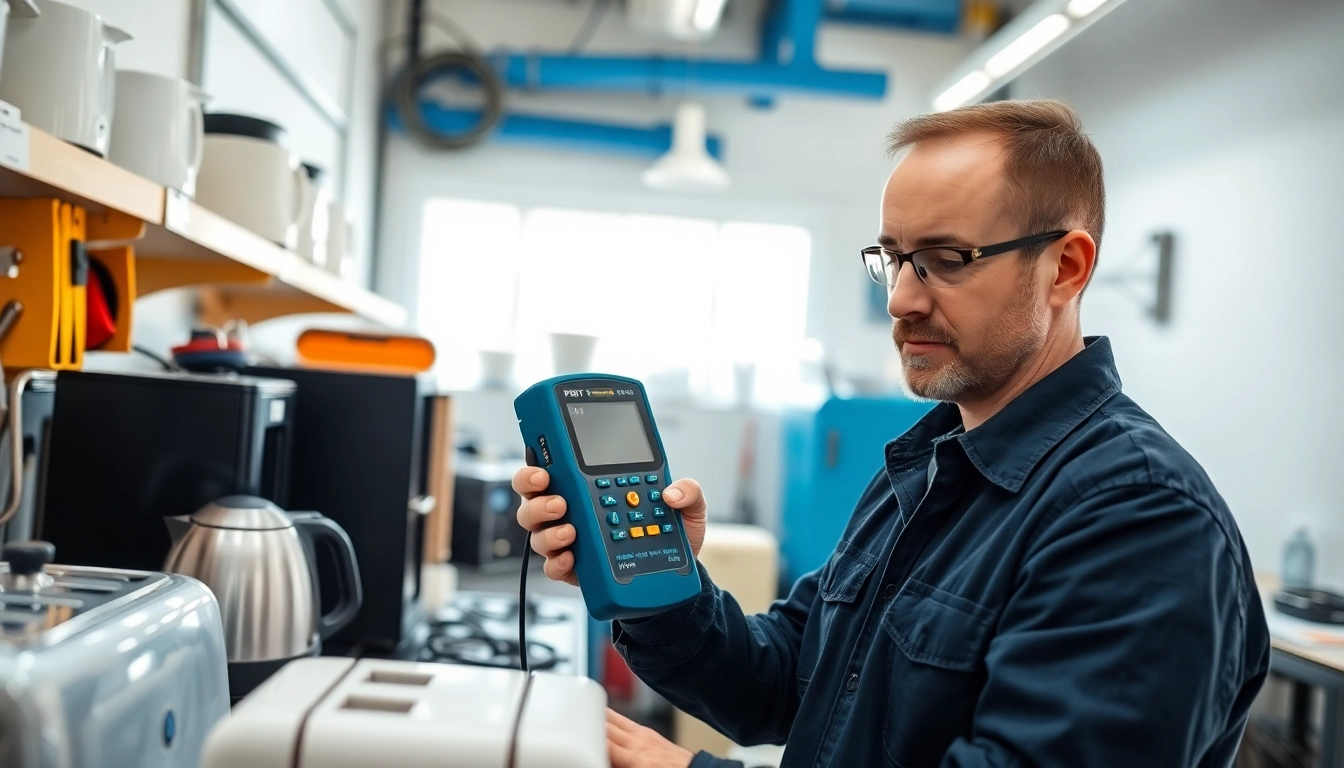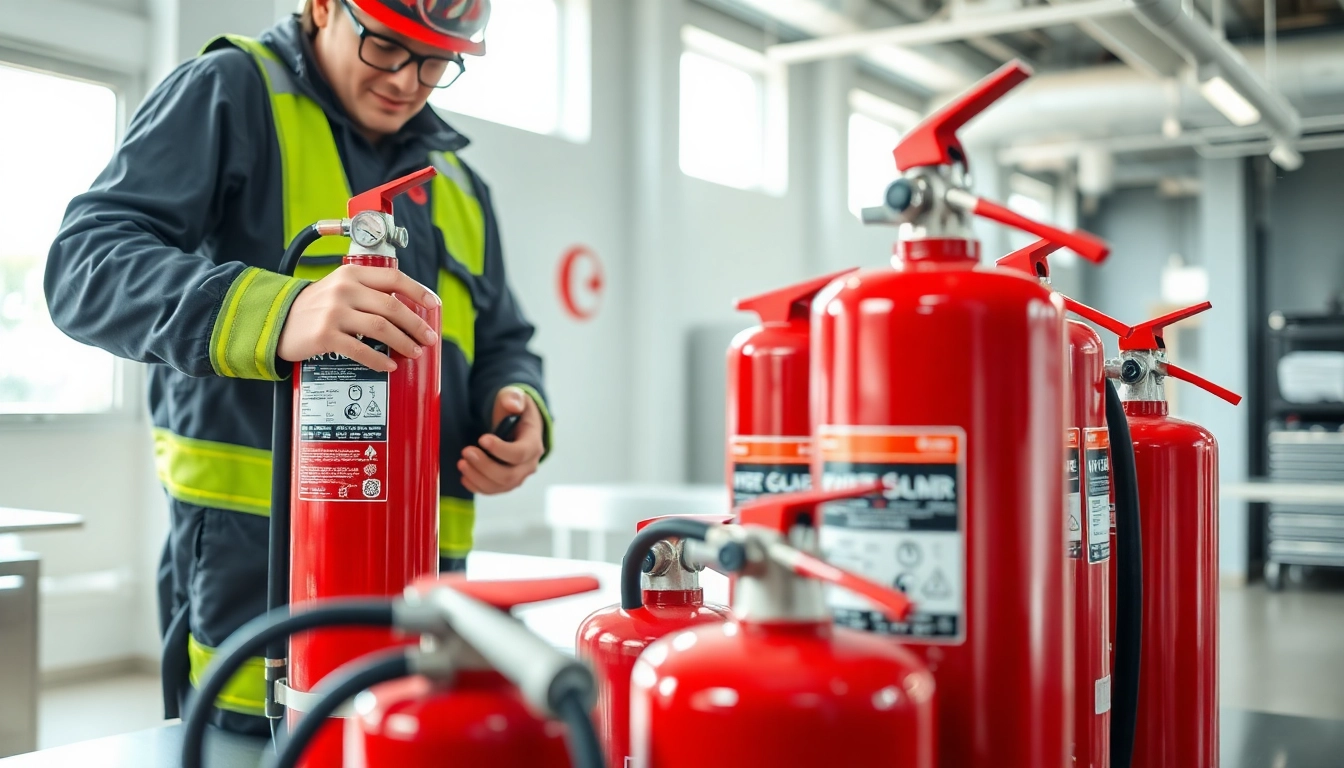What is Portable Appliance Testing?
Definition and Purpose
Portable Appliance Testing (PAT) refers to a systematic approach in which electrical appliances are inspected and tested for safety. This process is crucial to ensure that portable electrical devices, such as kettles, computers, and power tools, are safe for use in both commercial and residential environments. PAT involves both visual inspections and electrical testing, which helps to identify any faults or hazards that could pose a risk to users.
The primary purpose of Portable Appliance Testing is to minimize the risk of electrical accidents, which can lead to injuries or even fatalities. Regular PAT inspections can help to catch potential issues before they manifest into dangerous situations, thus serving as a preventative measure that underscores the importance of electrical safety in workplaces and homes.
History and Adoption Worldwide
The formal process of Portable Appliance Testing began to take shape in the late 20th century, primarily in the UK, spurred by growing awareness of electrical safety standards. The Electricity at Work Regulations in the UK made it a legal requirement for businesses to ensure that their equipment was maintained and safe to use.
Since then, PAT has been adopted in various forms around the globe. For instance, Australia and New Zealand have their own regulations that govern electrical safety and appliance testing, while other countries are slowly beginning to recognize the benefits of implementing similar practices. The common thread across all these regions is the emphasis on preventive measures and adherence to established safety standards.
Importance of Electrical Safety
Electrical safety is a critical concern that affects both personnel and property. According to electrical safety statistics, electrical accidents account for thousands of injuries annually, with improper or outdated equipment being a primary contributor. Implementing a rigorous PAT program significantly reduces these risks, ensuring both employees and customers are safe from potential electrical hazards.
Additionally, ensuring that appliances are safe not only protects physical safety but also extends to financial implications. In cases where electrical fires or hazards do occur, businesses can be faced with costly litigation, loss of reputation, and even penalties for non-compliance with safety regulations. Thus, PAT serves as not just a regulatory requirement but also a smart business practice.
Legal Requirements for Portable Appliance Testing
UK and Australian Regulations
In the UK, the legal framework surrounding PAT is primarily governed by the Health and Safety at Work Act 1974, which mandates employers to ensure the health and safety of their employees. Additionally, the Electricity at Work Regulations 1989 emphasize the importance of maintaining electrical equipment and conducting regular safety checks.
In Australia, similar regulations exist under the Work Health and Safety Act 2011 and various state-based electrical safety acts. These regulations require businesses to regularly inspect and test their electrical equipment, although the specific requirements may differ slightly across various jurisdictions. Nonetheless, the focus remains on preventing workplace accidents and ensuring compliance with national safety standards.
Employer Responsibilities
Employers hold a pivotal role in the safety of their employees through the implementation of PAT. This responsibility encompasses conducting routine tests and inspections, maintaining records of these tests, and ensuring that personnel are trained sufficiently. Furthermore, employers must be proactive in addressing identified risks and taking appropriate corrective actions where needed.
Employers also need to provide their employees with the necessary resources for safe operation, which includes not only safe appliances and equipment but adequate training to recognize potential hazards specific to their workplace settings. This comprehensive approach fosters a culture of safety that is essential for any organization.
Consequences of Non-Compliance
The consequences of neglecting PAT requirements can be severe. If an employer fails to comply with statutory obligations, it can lead to significant legal repercussions, including fines and penalties, and in severe cases, imprisonment depending on the negligence’s extent. More importantly, non-compliance can lead to electrical accidents that could injure or even result in fatalities within the workplace.
Moreover, businesses may also suffer reputational damage, losing the trust of employees, customers, and stakeholders as a result of their disregard for electrical safety. This highlights not just the legal ramifications but the ethical obligation to protect those who rely on safe working conditions.
How to Perform Portable Appliance Testing
Essential Equipment Needed
Performing Portable Appliance Testing requires specialized equipment designed to measure and analyze electrical safety. The fundamental tools include:
- Portable Appliance Tester (PAT Tester): This is the core piece of equipment used for conducting the tests. PAT testers can perform various types of tests, including insulation resistance, earth continuity, and functional tests.
- Multimeter: A multimeter can measure voltage, current, and resistance, providing crucial information about an appliance’s electrical conditions.
- Test Tags and Labels: After testing, appliances need to be tagged to show their testing status. This practice helps establish compliance records and schedules for future inspections.
- Record Keeping Tools: A logbook or software system to maintain records of all tests performed is essential for compliance and tracking purposes.
Step-by-Step Testing Process
The process of PAT requires a systematic approach to ensure thorough and effective results. Here’s a step-by-step guide:
- Visual Inspection: Before any electrical testing, a visual inspection should be conducted to check for any damages or wear and tear on the appliance and its connection to the power source.
- Functionality Test: Ensure that the appliance operates correctly before testing its electrical safety parameters. This includes considering any specific operational hazards.
- Electrical Tests: Use a PAT tester to carry out necessary electrical tests, including:
- Earth Continuity Test: To ensure a continuous earth path exists.
- Insulation Resistance Test: To verify that insulation between live conductors and earth doesn’t allow current to leak.
- Polarity Test: To confirm that the live and neutral connections are correct.
- Documentation: Record all test results in a timely manner, including any immediate corrective actions taken. Use appropriate tags or labels, and schedule the next testing date accordingly.
Common Testing Techniques Explained
There are several common testing techniques used in PAT, each serving a unique purpose:
- Visual Inspection: Often the first line of defense, visual inspections can identify obvious issues such as frayed cables or damaged plugs before electronic tests are performed.
- Earth Bonding Testing: This test ensures that the bonding connection within the appliance is intact and functions effectively, which is critical for preventing electric shock.
- Insulation Resistance Measurement: This involves measuring the insulation resistance of the appliance to determine if it is adequate to prevent dangerous leakage currents.
- Functional Testing: This ensures that the appliance operates according to its intended purpose and that all safety cutouts and features are functioning.
Choosing a Portable Appliance Testing Service
What to Look for in a PAT Provider
Selecting a qualified Portable Appliance Testing provider is crucial for ensuring safety and compliance. Here are key points to consider:
- Certification and Qualifications: Ensure that the PAT technician is certified and possesses the required qualifications to perform testing safely and effectively.
- Experience: Look for a provider with a solid reputation and considerable experience in conducting PAT in your specific industry.
- Insurance Coverage: Verify that the provider carries appropriate insurance coverage, including public liability insurance, in case of accidents or misjudgments during testing.
- Comprehensive Service: Opt for a provider that offers a complete suite of services, including testing, reporting, tagging, and future compliance checks.
Cost Considerations
The cost of Portable Appliance Testing can vary widely based on several factors:
- Volume of Appliances: The more appliances that need to be tested, the higher the overall cost. Many providers offer bulk rates for larger volumes.
- Testing Frequency: Regularly scheduled PAT may offer cost benefits, as some providers provide discounts for loyal customers or long-term contracts.
- Complexity of Testing: Appliances with more intricate designs or specific safety concerns may require more time and thus incur additional costs.
Recommendations for Quality Assurance
Ensuring the quality of a PAT service goes beyond simple compliance. Consider the following recommendations:
- Request Detailed Reports: Quality providers will offer comprehensive reports detailing the tests carried out, results, and any recommended corrective actions.
- Follow-Up Support: Seek out providers who offer follow-up support, including corrective actions and additional training where necessary.
- Stay Updated: Choose a provider who keeps abreast of changes in safety legislation or testing methodologies and updates their processes accordingly.
Future of Portable Appliance Testing
Technological Advances in PAT Equipment
The future of Portable Appliance Testing is increasingly shaped by technological advancements. Innovations in testing equipment are making the process faster, more efficient, and safer. Modern PAT testers come equipped with advanced capabilities that allow for wireless data management, real-time reporting, and integration with software systems for easier compliance tracking.
Moreover, the rise of artificial intelligence (AI) in testing methods will likely enhance the ability to predict and prevent faults before they occur, moving beyond reactive measures to proactive management of electrical safety.
Trends in Electrical Safety Standards
As technology evolves, so do electrical safety standards. Organizations are increasingly required to keep pace with these changes to ensure compliance. Future trends may include stricter regulations regarding testing frequencies, the need for smart technology integration in appliances, and enhanced employee training on electrical safety.
Moreover, as more businesses and organizations adopt sustainable practices, PAT will play a crucial role in ensuring that eco-friendly appliances meet the same rigorous safety standards as their conventional counterparts.
Importance of Continuous Learning and Training
The landscape of electrical safety is ever-changing, making continuous learning and training imperative for both employees and contractors involved in PAT. Regular training programs can help ensure that personnel remain informed about new regulations, technology, and safety practices.
Investing in ongoing education not only enhances the skill set of staff but also strengthens the overall safety culture within an organization, ultimately leading to a safer work environment and reduced liability concerns.



